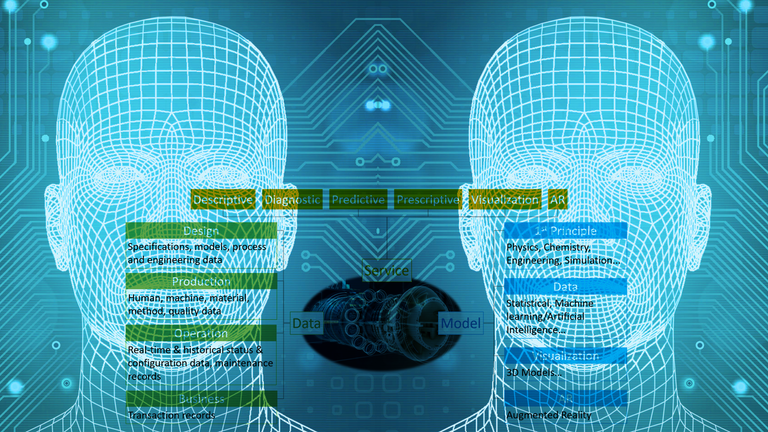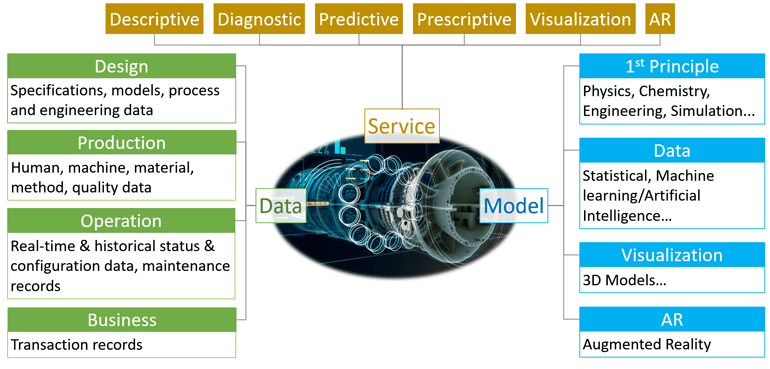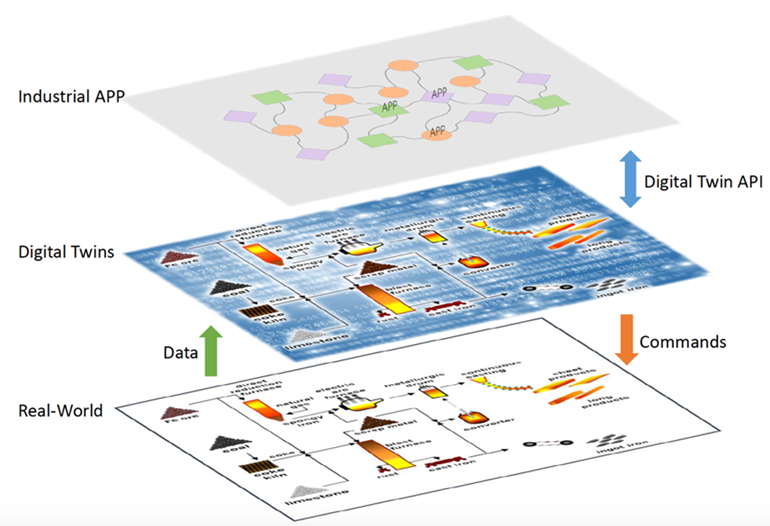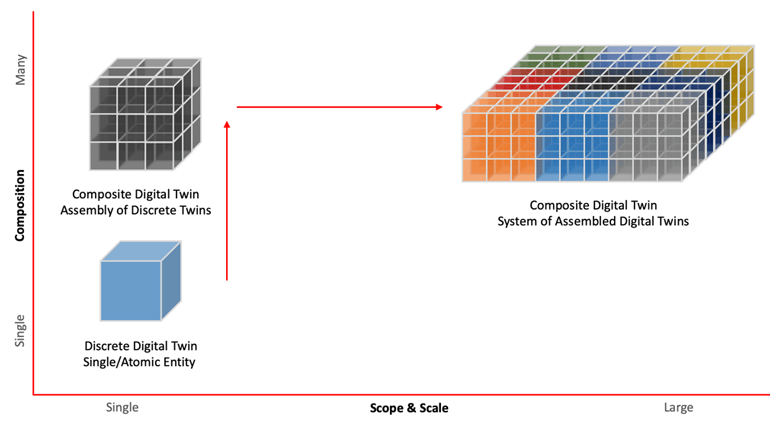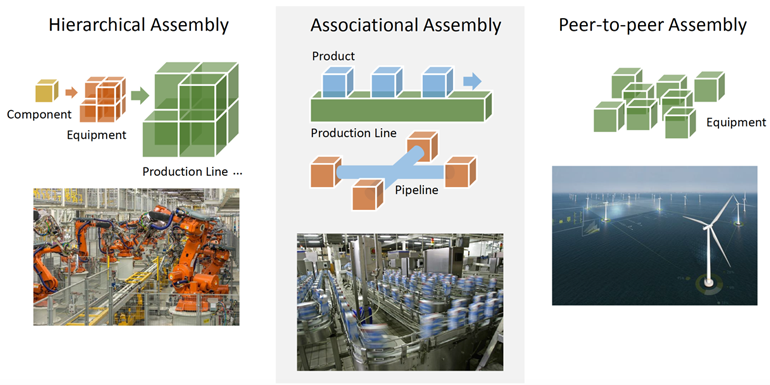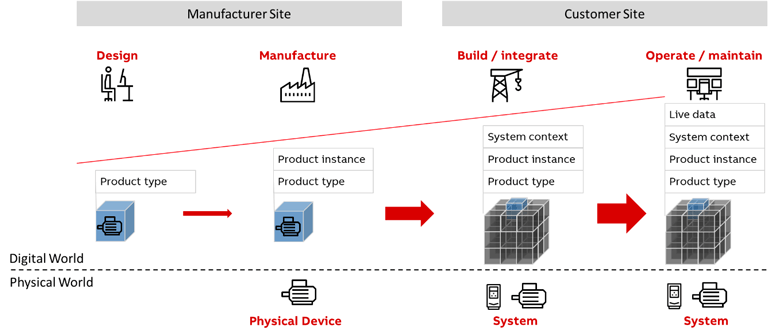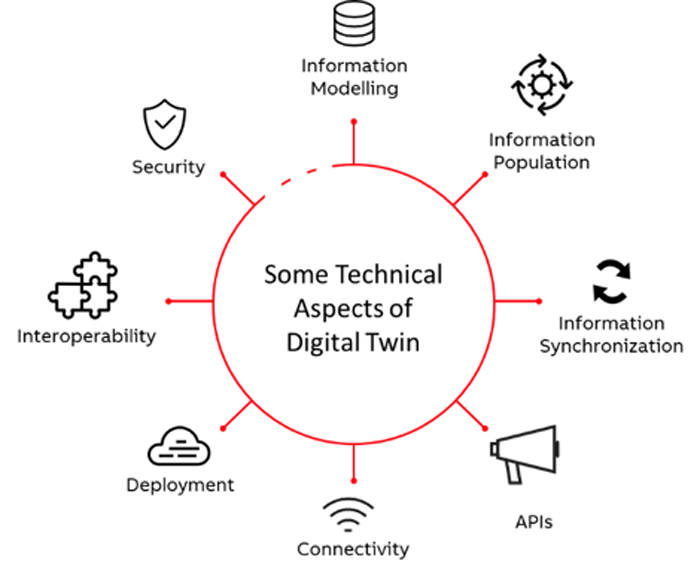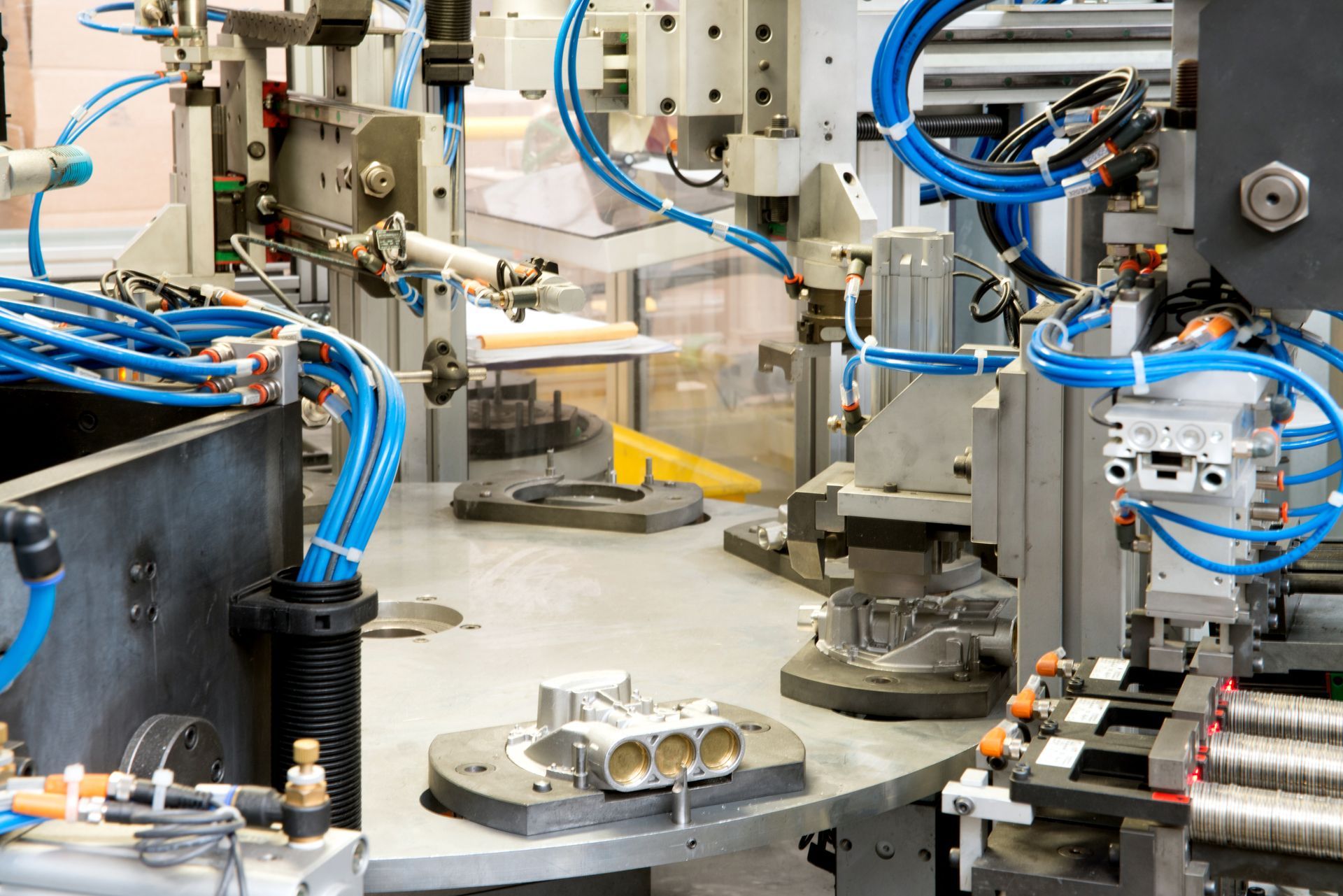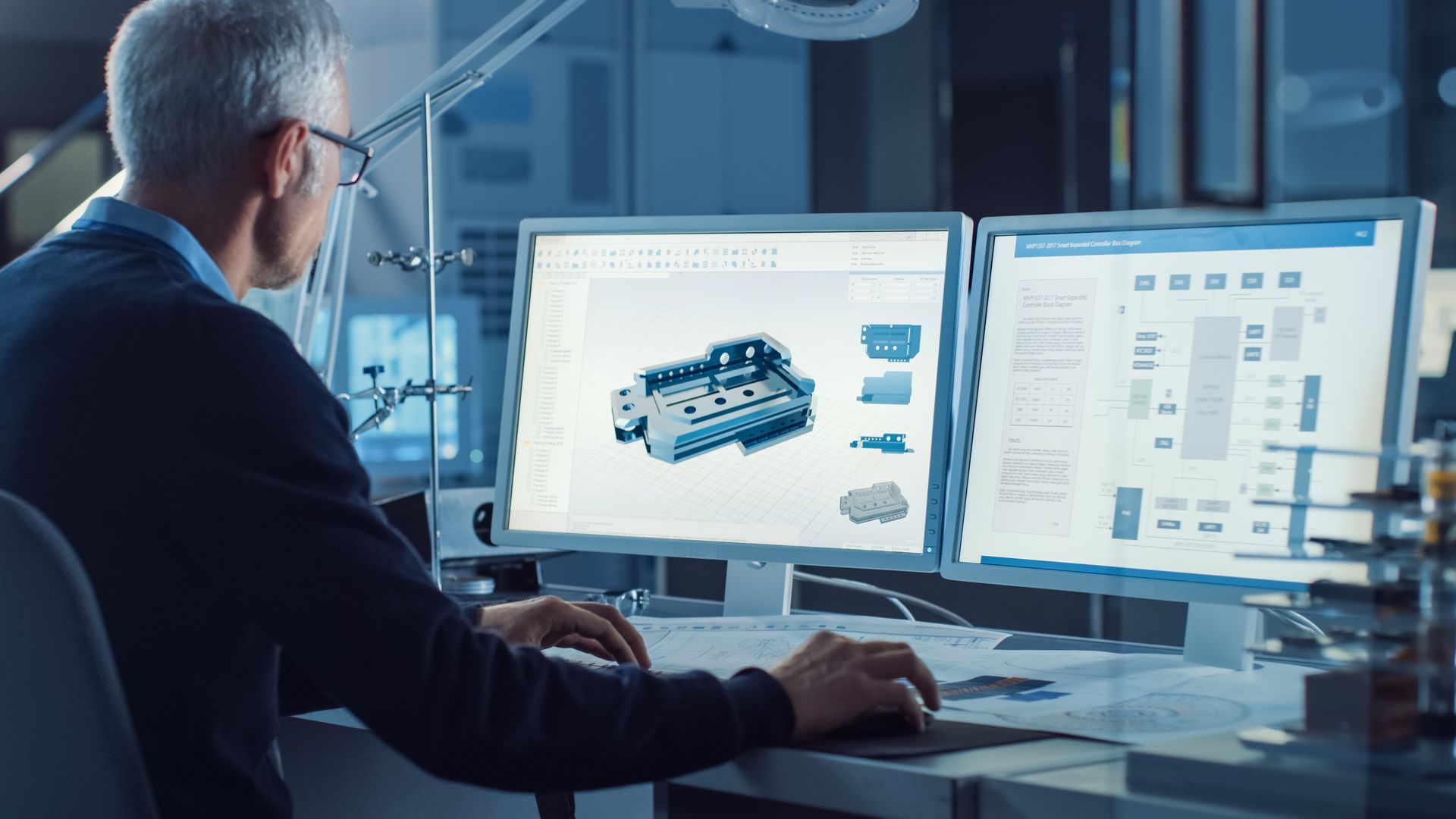Machine Design - A Short Introduction to Digital Twins
Madison Varga • February 5, 2020
A common vocabulary and approach to digital twins can elevate our understanding of their value.
New ParShi-Wan, LinSomayeh Malakuti, Pieter van Schalkwyk
Machine Design Magazine
FEB 05, 2020
The Industrial Internet Consortium (IIC) defines a digital twin as a digital representation of an entity, including attributes and behaviors, sufficient to meet the requirements of a set of use cases. In this context, the entity in the definition of digital representation is typically an asset, process or system.
Digital twin information includes combinations of the following categories:
Physics-based models and data
Analytical models and data
Time series data and historians
Transactional data
Master data
Visual models
Computations
What follows is an IIC perspective on what digital twins are and some of their technical characteristics
Designing Digital Twins
A digital twin comprises data, computational models (hereafter just “models”) and service interfaces, such as an object in an object-oriented programing language that has member data, methods and interfaces.
Data. A digital twin contains data about its real-world object that are required by the models to represent and understand the states and behaviors of the object. In many cases, it may consist of data in the full lifecycle of the object or—in the case of equipment—consist of data during the design phase (specifications, design models, production process and engineering data); production phase (data about workers, production equipment, material and parts, production methods and quality assurance); operation phase (installation and configuration data, real-time and historical state and status, as well as maintenance records); and even end-of-life procedural data. It may also contain business data, such as transaction records.
Models. A digital twin contains computational or analytic models that are required to describe, understand and predict the real-world object’s operational states and behaviors, as well as models that are used to prescribe actions based on business logic and objectives about the corresponding object. These models may include models based on physics or chemistry, engineering or simulation models, data models based on statistics, machine learning and artificial intelligence (AI). It may also include 3D models and augmented reality models for aiding human understanding of the operational states or behaviors of real-world objects.
Service (interface). A digital twin contains a set of service interfaces for industrial applications or other digital twins to access its data and invoke its capabilities.
With a common approach, we can construct a digital twin for equipment from its constituent component digital twins; a production line digital twin from the constituent equipment digital twins; and a factory digital twin from its production line constituent digital twins—just like with their counterparts in the real world.
Relying on a digital representation enabled by the digital twin, we can enable a host of smart industrial applications to run operations in the real world, optimally improving these operations.
New Relationships Among Digital Twins in Systems
The level of abstraction of a digital twin is such that it is sufficient for the requirements of a specific application or use case. A discrete digital twin is a single entity that provides value without needing to be broken down further. Assembling discrete digital twins to create a composite digital twin is shown in Fig. 3 as a vertical expansion that describes the increase in composition from a single to many entities.
As the scale and scope of a composite digital twin increase, it may expand horizontally from a composite assembly to a more complex composite system. The coloring in Fig. 3 shows how a composite digital twin system is made up of multiple composite digital twin assemblies.
The relationships between digital twins in an assembly are typically:
Hierarchical: Just like their real-world counterparts, a set of component digital twins can be assembled into an equipment digital twin, a set of equipment digital twins can be assembled into a production line digital twin, a set of production line digital twins can be assembled into a factory digital twin—and so on.
Associational: There are associations between digital twins, similar to their real-world counterparts. A gas pipeline digital twin is associated with its gas production and consumption equipment digital twins.
Peer-to-peer: The peer-to-peer relationship is observed in a group of equipment of same or similar types which perform the same or similar functions. The total effect of all the equipment is the simple sum of the outcome produced by each piece of equipment.
Digital Twin in an Entity Lifecycle
A digital twin is a solution to the information silo problem: The information about an entity is usually scattered across multiple information sources, which are developed and maintained by different organizations.
Figure 5 shows how digital twins can be used to tackle the information silo problem. The digital twin of the product is a means of, and the single interface to, accessing its lifecycle information. There are also semantic relationships between the digital twins just as there are in the real world. Failure to establish these relationships would leave the disconnected digital twin as an information silo to itself. Since the information comes from different sources, at different points in time and in different formats, establishing such relations in an automatic way is one of the major challenges in designing digital twins.
New ParaTechnical Aspects of a Digital Twin
A digital twin consists of a number of technical aspects, and Fig. 6 addresses some of the most common technical considerations when deploying digital twins.
Information modelling: The core part of digital twin is information which is related to different lifecycle phases of the underlying entity.
Information population: Information for digital twins originate from various sources. Some may be maintained inside the digital twins.
Information synchronization: It is necessary to keep digital twins in sync with the original information sources.
APIs: Digital twins interact with other components. To facilitate these interactions, various APIs must be in place.
Connectivity: The key enabler for interactions with and among digital twins is their ability to connect.
Deployment: Digital twins can be deployed on a spectrum from the edge to the cloud based on the requirements of the application.
Interoperability: As different vendors offer their own digital twin solutions, it is necessary for digital twins to interact with each other in an interoperable way toward fulfilling the overall functionality of the target system.
Outlook
There will be a proliferation of digital twins over the next few years according to industry analysts. It is important to have a common understanding of what digital twins are, how they deliver value and how we can create these twins in a trustworthy manner. The IIC provides vendor-agnostic guidance through white papers, frameworks and testbeds on new and emerging technologies, such as digital twins.
Within the IIC, the Digital Twin Interoperability Task Group is actively working on practical guidance on the use and application of digital twins. Current and future work includes frameworks for digital twin architecture, security, interoperability and user experience.
This article was submitted by IIC and prepared by Pieter van Schalkwyk, CEO, XMPro; Dr. Somayeh Malakuti, senior scientist, ABB Corporate Research, Germany; and Shi-Wan Lin, CTO, Yo-i Information Technology, Ltd. For more information, visit www.iiconsortium.org.
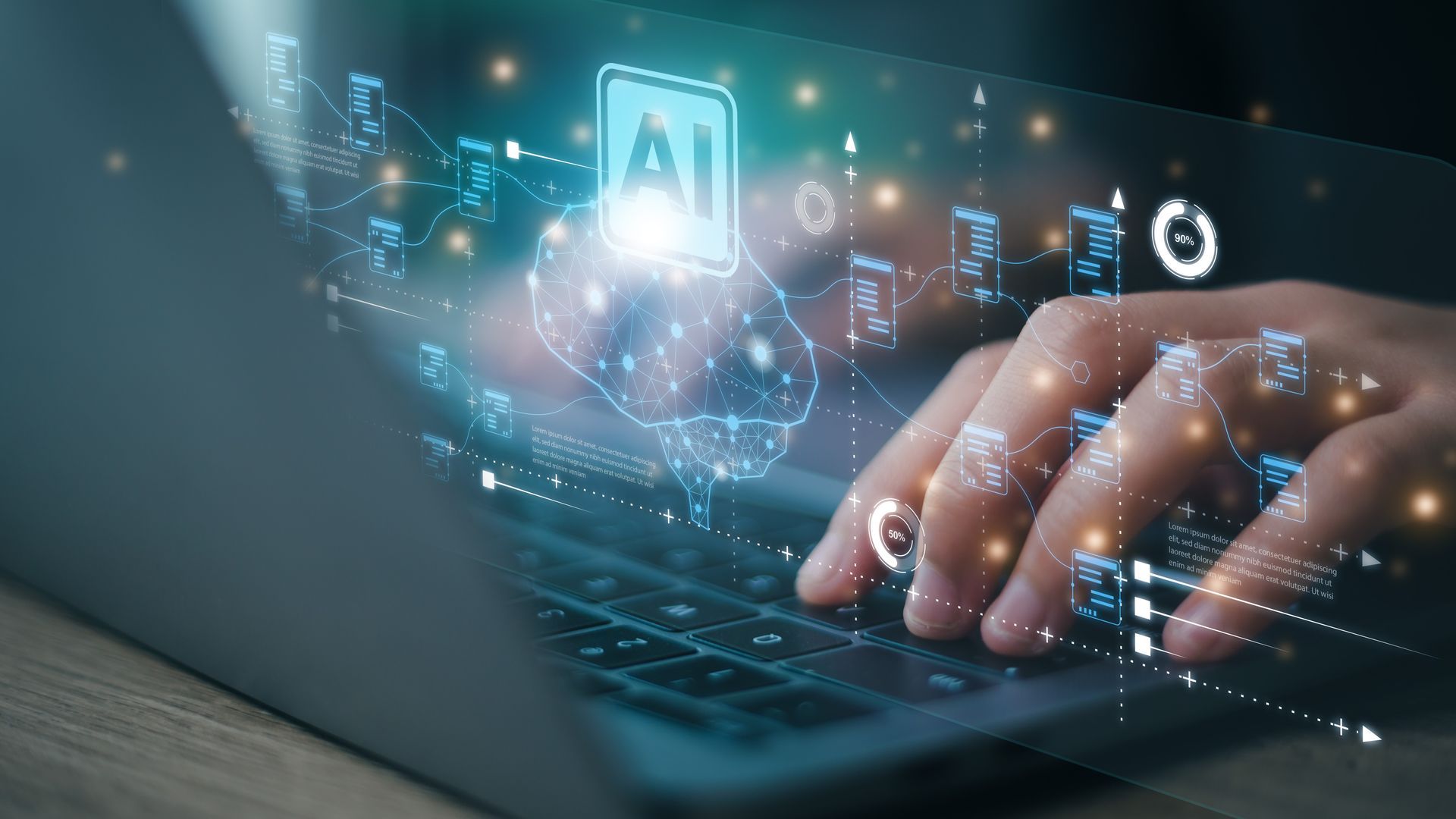
AI isn’t just a buzzword anymore, and it’s not just for Fortune 500 companies. It’s quietly reshaping how businesses—especially small and mid-sized ones—manage their IT, protect their data, and improve productivity. Yet for many business owners, AI still feels like something out of reach. Maybe you’ve heard of ChatGPT or Microsoft Copilot, but you’re not quite sure how it fits into your world. That’s where we come in! We’re breaking down what AI means for your IT operations today—and how Managed IT Service Providers (MSPs) like us are helping businesses like yours get ahead without getting overwhelmed. What AI Is Doing for IT Management at SMBs (Right Now) From cybersecurity to automation, AI is already making IT faster, smarter, and more secure. Here’s how: 1. AI-Powered Cybersecurity AI tools are becoming essential to detect and stop threats to your business before they become disasters. 24/7 threat detection : Tools like SentinelOne and Microsoft Defender use AI to monitor your systems in real-time and spot suspicious activity—even before a human could. Phishing protection : AI analyzes emails and links to catch impersonation attempts and scam messages. Automated response : If a threat is detected, AI tools can automatically isolate infected systems and prevent spread—within seconds. This is key, pairing your 24/7/365 threat detection with 24/7/365 action! 2. Smarter IT Automation AI isn’t just about fighting cybercrime—it’s helping businesses save time, reduce manual work, and operate more efficiently. Here are some examples of how AI is automating key IT functions behind the scenes: Predictive maintenance : AI can flag hardware or software issues before they cause downtime. User behavior analysis for better permissions control : AI tools can monitor how employees use systems and flag risky access patterns—helping prevent accidental data exposure or insider threats. Intelligent alert prioritization: Instead of flooding your IT dashboard with noise, AI filters and ranks alerts by severity—so real issues don’t get buried under false positives. Self-healing systems : In some cases, AI can detect and fix common problems (like restarting a frozen service) without any human involvement. These aren’t hypothetical tools—they’re already in use by MSPs and IT platforms supporting businesses like yours every day. 3. Productivity Gains with Tools You Already Have If your business uses Microsoft 365, you already have access to AI—and probably aren’t using it fully yet. Microsoft Copilot (Word, Excel, Outlook, Teams): Draft emails, summarize meetings, or create reports with just a few clicks. Summarize long threads and documents Build presentations or clean up Excel data without formulas or formatting headaches. Outlook Suggestions : AI can suggest meeting times, draft responses, or flag important messages. Teams AI features: Transcripts, highlights, and action items from meetings—delivered directly after the call. These tools don’t require a tech degree to use—they just need someone to turn them on, configure them properly, and show you how to use them. That’s where we come in. Our job is to make it easy, secure, and practical for you so you can focus on what you know best…your business. Why Business Owners Shouldn’t Wait AI isn’t going away. And for businesses that get ahead of it, there’s a real opportunity to: Outpace competitors with faster decisions and smarter tools Protect against modern cyber threats Reduce costs through automation and efficiency Empower employees with tools that make work easier, not harder The good news? You don’t need a full-time IT team or a PhD in machine learning. You just need the right partner to guide you. Let’s Talk About AI for Your Business Curious about what AI could do for your business? Overwhelmed by options and don’t know where to start? Let’s fix that. Schedule a call with our team to discuss your business, your systems, and where AI could make the biggest difference—today and in the future.

For many businesses with up to 100 employees, in-house IT management is a constant balancing act for leadership. You need reliable technology, strong cybersecurity and fast support, but hiring an in-house IT team can be expensive and difficult to scale. Plus, simply making a quality IT hiring decision can be challenging when you or your team don’t possess excellent IT skills yourself. The key decision to keep IT in-house vs. outsourcing is often a financial one. Many business owners assume that keeping IT in-house is more affordable than hiring an IT Managed Service Provider (MSP)—but that’s not always the case. In fact, outsourcing IT to an MSP can provide real cost savings while also delivering substantial incremental value. Let’s break down the numbers of the outsourced MSP vs. in-house IT decision so you can make the best choice for your business. The True Cost of Hiring an In-House IT Team If you're considering hiring an internal IT person, it’s essential to understand the full cost of employment, not just the salary. Here's what you can expect to pay for a single IT manager (estimates only, may vary by geographic location):
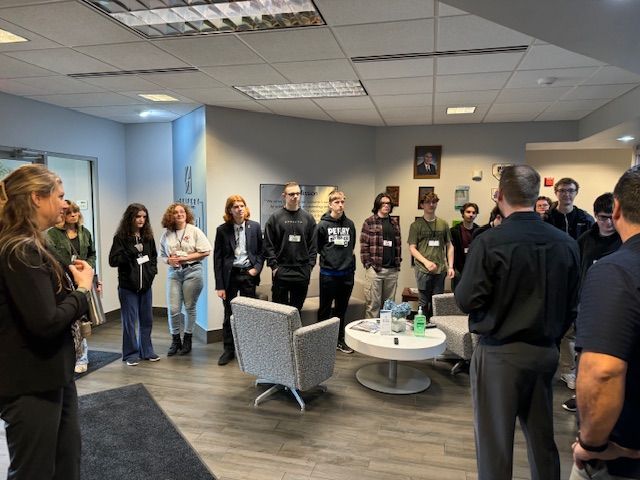
Seifert Technologies recently partnered with the Stark Education Partnership (SEP), Fairless High School and Perry High School and provided a career day for the students. The objective was to provide an insight to local area high school students on the careers and opportunities available right here in Stark County. Our presentations focused on the services which we provide to our clients related to Engineering, IT, and Staffing. We featured interactive displays on Robotics, Machine Design, 3D CAD, PLC Motion Control, IT Infrastructure, Power BI, Software Development, and Career Services. Jaecey Hudson holds the position of Career Champion at Stark Education Partnership (SEP). Her role places her within several local High Schools including Fairless and she counsels the students on their career paths. Jaecey was instrumental in scheduling the day with Fairless High School. SEP is a catalyst, engaging and collaborating with education, business, civic and community stakeholders to drive sustainable improvement and innovation to provide all students with education and career success. SEP serves education, business, and community organizations in the Stark County region as a connector and partner. SEP collaborates with local foundations to ensure a continued focus on meeting emerging needs and works in complementary fashion with other nonprofits throughout the region. Stark Education Partnership’s vision to build generations of successful individuals who fulfill their potential and grow roots in Stark County is brought to life by engaging students in real-world workplace experiences. We also worked closely with the Robotics / STEM department at Perry High School to plan the day for these students. Stephanie Laskey and her team from Perry were the high school coordinators for the event. The Perry Local Project Lead the Way classes emphasize various engineering aspects, spanning from introduction to engineering design, computer manufacturing, digital electronics, aerospace engineering, to principles of engineering. Students were enthusiastic and actively involved in witnessing engineering principles in action at Seifert Technologies. They gained insight into the structure of engineering firms and the key attributes of successful engineers. They left Seifert Technologies with new information, eager to apply their newfound knowledge in the world of engineering. To learn more details about the services of Seifert Technologies, contact us at (330) 833-2700 or sales@seifert.com. Please visit www.seifert.com for more information on our full range of capabilities. For more information related to SEP, please visit www.edpartner.org .

Manufacturing can be traced back to the Industrial Revolution. The Industrial Revolution changed the way that manufacturers worked all over the world. There were inventions of new machines and technology. The new production made manufacturing cheaper, faster, and more efficient. The Industrial Revolution changed manufacturing for the modern world. In the First Industrial Revolution, which began in the late 18 th century was a significant change in human history. It transitioned to industrial societies, fueled by innovations in textile manufacturing, steam power, and iron production. This period increased efficiency in the mass production of goods. The invention of the steam engine led to the increase of railways. The First Industrial Revolution was the first step in modernizing the world. The Second Industrial Revolution is known as the Technological Revolution. This happened in the mid-19th century and was known for the adoption of electric power. This transformed the manufacturing process in steel. It led to the invention of the telegraph, telephone, television, and radio. Advancement in transportation was drastically improved leading to increased urbanization. The Third Industrial Revolution is known as the Digital Revolution. It happened in the late 20 th century with digital technology. This was the rise of the internet and digital computers. This changed the way people interacted with each other. The World Wide Web was developed. This led to the digitalization of every known modern aspect of life. The Fourth Industrial Revolution is referred to as Industry 4.0. This revolution is known for technologies such as artificial intelligence, the Internet of Things (IoT), 3D printing, and robotics. The Fourth Industrial Revolution is expected to have impacts on society to increase quality, production, and drive economic growth.

Phishing, Smishing, and Vishing are all ways that people try to get sensitive information from other people. They are all done in similar ways, but they have different ways of getting this information. It is important to know the difference between the three and how it looks when someone is getting targeted. Phishing Phishing is an online scam that gets sent to email accounts. It consists of getting sent a link or attachment from an unfamiliar email domain. When a user clicks on the link or attachment that is when the sender gets access to data. There are many different types of phishing to watch out for. Some of include spear, email, and whaling. Spear phishing is when someone specifically targets one person. They do this by adding their name, job, or social life. Whale phishing is when someone targets a big target like a manager, owner, or celebrities. They target these people since they have a lot of information on companies or other people. Smishing Smishing is a scam that gets sent as a text message (SMS). Scammers send a text to a target. The text that the target receives looks like a text from a trustworthy company. The scammers make the message look like it is the real company, and they send a link that they want the target to click on. There are different ways that these messages look. It can look like you won money or a prize. It can also look like a tax report or bank statement. Vishing Vishing is a scam where the target gets called over the phone rather than receiving a text message or email. The target is selected, and they call trying to convince them to download software for their device. How To Protect Yourself from All Three There are many ways to prevent these things from happening. Most importantly, do not click on links or attachments from unknown sources. Report suspicious emails, text messages, or calls that you receive. When you report these, you protect yourself and others from getting information taken. Seifert Technologies’ IT Division is your source for cybersecurity awareness. We are a registered agent of KnowB4 Products ( www.knowbe4.com ). These products implement sate of the art programs which: Send fully automated simulated phishing attacks, using thousands of customizable templates with unlimited usage Train your users with access to the world's largest library of always-fresh awareness training content AI-Driven phishing and training recommendations based on your users' phishing and training history Use Assessments to gauge proficiency of your users in security knowledge and security culture attitudes Easy user management using Active Directory Integration Contact our IT Service Team To learn more details about cybersecurity training contact us at (330) 833-2700 or sales@seifert.com. Please visit www.seifert.com/itservices for more information on our full range capabilities.

For over 10 years the team at Seifert Technologies has participated in the Toys for Tots program. Every year, our employees show their support by donating new toys which are then delivered to local area families. It is an awesome way to give back to our Stark County community. We also want to thank all of our employees for their wonderful donations. Way to go team!

At Seifert Associates, we have been meeting the challenges of hiring technical talent for decades. Finding the right candidate for the right position can be a challenge. Thus, we have put together a list of the top questions we get from HR and give ideas on how to overcome the challenges we face in today’s job market. What Are the Top Hiring Challenges Today? First, we must talk about current hiring challenges. Today, employers encounter new recruitment hurdles as the job market progresses. Employers' obstacles and difficulties arise when it comes to recruiting and hiring qualified candidates. These challenges can come in many forms, such as a shortage of skilled workers, a highly competitive job market, or a lack of diversity and inclusion in the hiring process. The rapid changes in both technology and the evolving job market also contribute to these hiring challenges. Employers must overcome these hiring challenges to attract and retain top talent, as well as build a thriving workforce to drive organizational growth and success. Here is a List of the Top Concerns for Hiring: Finding Quality Candidates Attracting the right talent for a technical position is an employer's foremost concern. The more skilled the requirements are, the more the employee is sought after. With a limited workforce and intense competition for top-tier candidates, employers struggle when it comes to finding technical talent. Along with that, employers struggle to engage with candidates who are not actively seeking a new position. We spoke about the importance of collaborating with a recruiter who has strong experience with finding technical candidates in a previous blog, which you can review HERE . Attracting the Right Technical Talent Another challenge that employers face is attracting the right talent for a technical position. Highly skilled candidates today look for more than just a competitive salary. Candidates want to collaborate with a company that has a quality work culture. But they also want to seek employment with companies who share the same values, as well as have great benefits and a good understanding of work life balance. In fact, 46% of job seekers cite company culture as very important when choosing to apply to a company, and a shocking 47% of employees cite that company culture is the driving factor when looking for a new job. Skills Gap and Training

